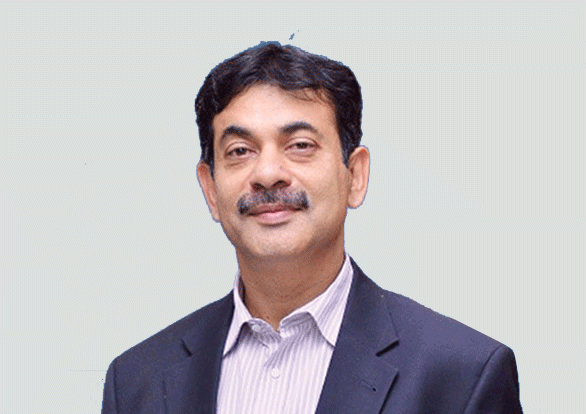[ad_1]

Despite logistics challenges, how is Telangana securing billion-dollar investments in electronics? Will the state unveil a new semiconductor policy soon? Jayesh Ranjan, IAS, from Telangana’s IT and Commerce Department and ITE&C, shares his insights with EFY’s Nijhum Rudra.

Q. How has Telangana’s electronics and semiconductor manufacturing ecosystem grown? Can you elaborate?
A. Telangana is strengthening its electronics and semiconductor sector, with Hyderabad emerging as a hub for research and development (R&D) and manufacturing in this domain. Global leaders like Qualcomm, Nvidia, Micron, AMD, Intel, Microchip, NXP, OnePlus, Oppo, and others have established significant operations in the city, underlining its importance on the global technology map. The state hosts a robust electronics manufacturing ecosystem, including Foxconn, Bharat Electronics Ltd (BEL), Schneider Electric, and Premier Energies. An extensive network of micro, small, and medium enterprises (MSMEs) also contributes to a well-rounded value chain.
Q. What challenges remain despite these developments?
A. Telangana faces one handicap: the absence of a wet port. Despite these, Telangana strives to compete with established electronics and semiconductor ecosystems in Tamil Nadu, Maharashtra, and Karnataka. The absence of a wet port impacts the state’s ability to support seamless international trade and reduces its attractiveness for industries relying heavily on import and export logistics. Unlike Tamil Nadu (with Chennai and Ennore ports), Maharashtra (with Mumbai and Nhava Sheva/JNPT ports), and Karnataka (with Mangaluru port), Telangana is a landlocked state.
Q. Are there any plans to introduce a separate semiconductor policy? If so, how unique will it be?
A. The Telangana Electronics and Semiconductor Policy 2025 is currently under stakeholder consultations. This policy aligns seamlessly with the India Semiconductor Mission, supporting critical areas like wafer fabrication, display technologies, compound semiconductors, outsourced semiconductor assembly and testing (OSAT), assembly, testing, marking, and packaging (ATMP), and advanced R&D. The policy also focuses on expanding into high-growth segments such as consumer electronics, mobile devices, IT hardware, telecom equipment, and electronic components. Special emphasis is placed on solar PV cells and modules, contributing to clean energy initiatives, and developing ancillary industries to support the broader electronics ecosystem. The plan includes expanding EMCs and establishing new semiconductor-specific zones to offer dedicated spaces with integrated facilities.

Q. How does the Telangana government work with investors to develop the regions in terms of logistics and industrial zones?
A. Special emphasis has been placed on developing the electronics manufacturing services (EMS), component, and printed circuit board (PCB) manufacturing ecosystem. Electronics and semiconductor manufacturing clusters have been strategically established with good connectivity to national and state highways and Hyderabad International Airport. Their proximity to the capital city further ensures easy access to a skilled workforce. All major projects are planned within these zones for comprehensive and integrated development.
Q. What incentives are offered to ESDM and semiconductor companies regarding land allotment, CapEx, and subsidies?
A. Companies can avail themselves of discounts of up to 50% on Telangana State Industrial Infrastructure Corporation (TSIIC) land allotment prices in designated clusters. These subsidised rates apply in EMCs and other specialised zones, making infrastructure affordable for startups and large corporations. Eligible companies can receive 20-25% of fixed capital investment as subsidies, significantly reducing upfront costs. Projects with investments exceeding `2 billion qualify for a customised package of incentives tailored to meet their unique requirements. To compensate for the absence of a wet port, our incentives help ESDM and semiconductor companies offset logistics expenses. Most importantly, companies can avail themselves of employment-based incentives, which include reimbursements or support linked to the number of jobs created, encouraging large-scale employment generation.
Q. Which significant electronics companies have invested in the state, and what is the total direct and indirect employment?
A. Over the past nine years, the state has attracted investments totalling an impressive US$50 billion from global industry leaders. Companies like Apple, Microsoft, Meta, Amazon, Google, Boeing, and Lockheed Martin have recognised Telangana’s conducive business environment, innovative policies, and robust infrastructure, driving their regional investments. For instance, Amara Raja Group is developing a gigafactory project focused on producing lithium-ion cells and battery packs with a capacity of up to 16GWh. Foxconn Group is establishing an electronics manufacturing facility that is anticipated to create 100,000 jobs over the next decade, with production set to begin in January 2025. Premier Energies is setting up multiple state-of-the-art solar PV cell and module manufacturing facilities, including a pioneering wafer and ingot facility, the first of its kind in India. Radiant Appliances and its subsidiaries manufacture LED TVs and other consumer appliances in consumer electronics. Schneider Electric has committed around `9 billion across three phases, a move expected to generate employment for 1000 people.
Q. What is Telangana’s position in this country’s electronics manufacturing scenario? How can it contribute to India’s GDP?
A. Telangana ranks sixth in electronic goods exports from India and has achieved an impressive 30% year-on-year growth in electronic goods exports from FY 2022-23 to FY 2023-24, reflecting the success of its policies. The state accounts for 6% of the total electronics production in this country, with over 250 electronics companies operating in Telangana and employing more than 50,000 people. These figures highlight the industry’s potential to drive economic growth in India.
Q. What is next for Telangana’s electronics sector in the years ahead?
A. The Telangana Electronics and Semiconductor Policy 2025 aims to position the state as a global hub. Collaborative initiatives between the government, academia, and industry will address the skill gap and meet the industry’s talent requirements. The state will prioritise fostering innovation through state-sponsored institutions like T-Works, a hardware prototyping centre supporting startups and innovators in product development. Additionally, T-Hub will assist technology startups by providing essential resources and mentorship to help them grow and succeed.
[ad_2]
Source link









